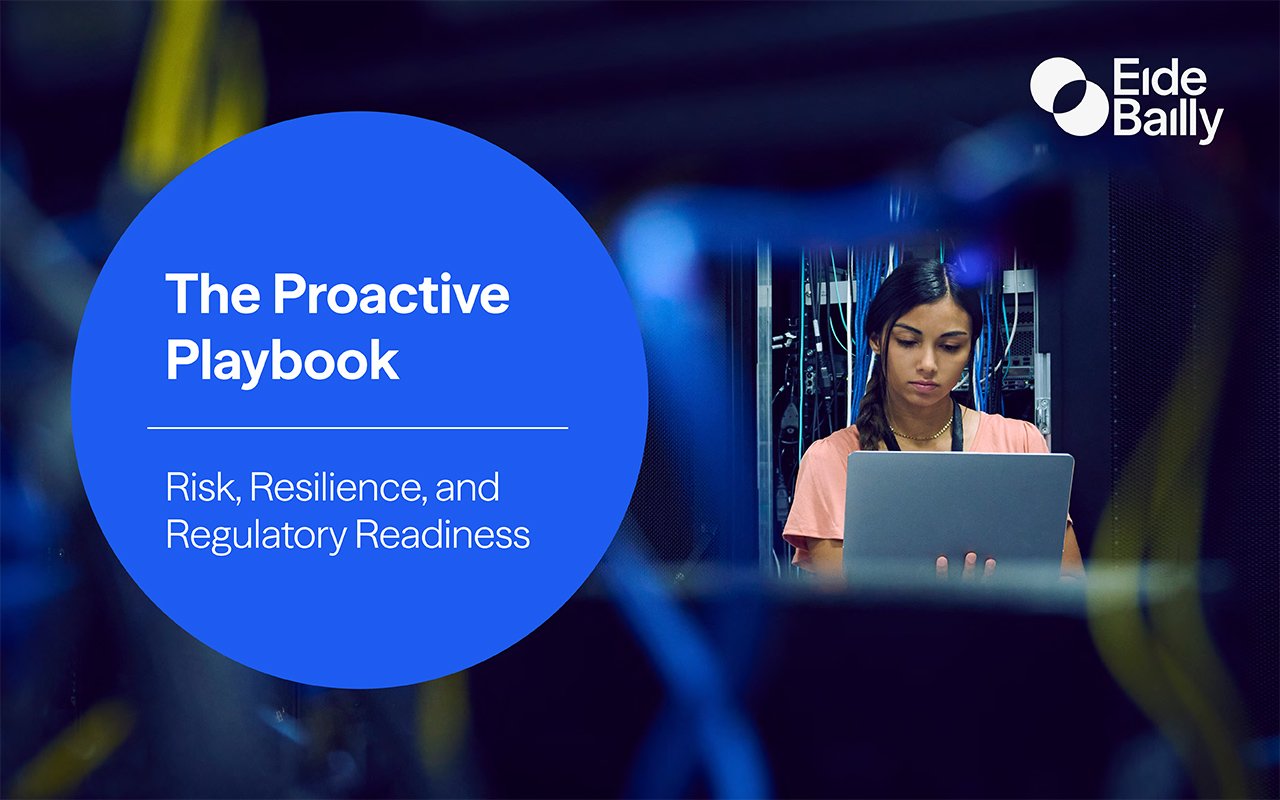Key Takeaways
- Building clear accountability and modern systems strengthens your business foundation to reduce risk.
- Empowering your people and designing secure processes creates an essential layer of defense.
- Preparing proactively with response plans, risk assessments, and real-time monitoring ensures resilience against disruption.
Most organizations treat strengthening security, managing risk, and maintaining compliance as a defensive shield to guard against worst-case scenarios. But protecting your business is about more than reacting — it’s about designing systems, processes, and culture that reduce vulnerability, respond to change, support your people, and scale with your future.
Here’s how to embed security and compliance into your organization for adaptive resilience.
Strengthen Your Foundation
A strong foundation is central to a secure business. Modern infrastructure, role clarity, and centralized accountability build the groundwork for smart, secure decision-making.
1. Assign Risk Ownership Across the Organization
Protection requires leadership. From compliance and cybersecurity to fraud detection and recovery, every aspect of risk needs a clear owner. Without defined accountability, warning signs go unnoticed, and response times suffer. Identify who is responsible for risk oversight in each domain, and ensure they have the structure, authority, and tools to take proactive action.
2. Build Control into Your Financial Infrastructure
Outdated systems, unclear roles, and manual processes create blind spots that increase your risk exposure.
What to watch for:
- Outdated accounting systems with limited visibility
- Siloed finance, ops, and tech teams
- Overreliance on spreadsheets for reporting
- Role confusion or overlap in transaction approvals
- Your next step: Reevaluate whether your financial infrastructure — systems, roles, and visibility — can scale securely and support smarter, risk-informed decision-making.
3. Upgrade Tools That Support Transparency and Action
Modern business systems don’t just increase efficiency; they reduce exposure. Connected data and streamlined processes allow you to monitor activity and spot anomalies before small issues escalate. Audit your core business platforms to make sure they enable proactive oversight.
- Your next step: Download our guide and start building a more secure, scalable future.
Fortify Your People and Processes
Your processes — and the people who carry them out — can either reinforce your protection strategy or expose critical gaps.
1. Build a Culture of Security and Accountability
People are often the most vulnerable link in cybersecurity. They’re also your strongest defense.
Here’s how:
- Operational Leaders: Champion a culture of security awareness to reduce human error and encourage incident reporting.
- Technical Leaders: Provide targeted training on emerging threats and security best practices.
- Financial Leaders: Support funding and track effectiveness of training programs as part of compliance audits.
Knowledge is your best asset, especially since 95% of cyberattacks are due to human error.
2. Design Roles and Workflows to Minimize Fraud Risk
Fraud is a business-wide threat. Disconnected systems, remote work, and lack of controls create significant unwanted exposure.
Proactive moves:
- Map roles and permissions to financial workflows
- Require dual approvals for wire transfers and sensitive transactions
- Implement continuous monitoring for vendor or payment anomalies
Organizations with strong anti-fraud programs detect and mitigate fraud 42% faster than those without.
Remember, fraud and cybersecurity both require real-time visibility, internal controls, and a proactive mindset. Coordinate your response strategies, policies, and oversight structures.
- Your next step: Use our Fraud Prevention and Detection Checklist to identify ways you can improve your anti-fraud program.
3. Strengthen Identity and Access Management
Managing who has access to what — and how — isn’t just about preventing unauthorized entry. A comprehensive security strategy requires consistent monitoring to ensure systems and data are secure from malicious actors.
Implement robust identity management policies with multi-factor authentication (MFA) or passwordless authorization, role-based permissions, and regular access reviews. These controls reduce insider threats, meet regulatory demands, and build customer trust.
According to Microsoft engineers, 99.9% of account compromise attacks could have been prevented with MFA.
- Your next step: Limit Access. One of the safest (and easiest) ways to ensure you’re being proactive is through least privileged access, where users only get the minimum level of access necessary to do their jobs.
Apply least privilege to:
- Users (staff, contractors, etc.)
- Applications
- Systems and processes (scripts or automation tools)
Example
A receptionist might need access to scheduling, not patient records. An accountant might need billing access, but not server configurations.
Prepare, Adapt, and Respond
Security and risk management are not one-time projects. If your strategy doesn’t grow with you, it becomes a risk in itself.
All leaders should ask: Does our strategy reflect where we’re headed?
Incident response, compliance readiness, and intelligent monitoring allow you to act confidently when disruption strikes.
1. Develop and Test Response Plans
The global average cost of a data breach has reached a record $4.8 million. When a cyber incident occurs, how quickly and confidently your team responds determines the difference between disruption and disaster.
Develop and regularly test a formal incident response plan that clearly defines roles, escalation paths, and communication protocols.
- Operational Leaders: Coordinate cross-department responses and communication.
- Technical Leaders: Lead technical containment and recovery, align playbooks.
- Financial Leaders: Guide financial analysis, compliance notifications, and insurance claims.
- Your next step: Read more about incident response best practices and how to create the best incident response plan for your organization.
2. Use Risk Assessments to Prioritize Improvements
Protection starts with understanding where you're vulnerable. Risk assessments help you prioritize actions, investments, and safeguards based on real exposure.
Our work in action: From Breach to Blueprint
A municipal organization faced a major breach. After helping contain the breach, we led a full risk assessment and built a cybersecurity roadmap tailored to their environment — turning crisis into a foundation for long-term protection.
3. Stay Litigation-Ready
When disputes or investigations arise, documentation and defensible decision-making are your first line of defense. Risk-aware organizations ensure their policies, transactions, and communications are audit-ready and litigation-resilient.
- Your next step: Conduct a policy and documentation review to ensure your organization is prepared for investigations, disputes, or audits.
4. Build Confidence Through Compliance
Compliance isn’t just about passing audits — it’s about earning stakeholder trust.
Whether you’re navigating HIPAA, CMMC, PCI, or state-specific mandates, use compliance mandates to your advantage to:
- Strengthen processes
- Support funding eligibility
- Demonstrate proactive governance
- Ensure audit-readiness
- Your next step: Read more about reframing compliance as a competitive advantage.
5. Monitor Real-Time Risk Indicators
Reactive risk management creates blind spots. By the time traditional indicators trigger a response, damage is often done.
Key Risk Indicators (KRIs) act as early-warning signals. They empower you to act before threats escalate.
Examples include:
- Failed logins or location anomalies
- Suspicious transactions or user behavior
- Unauthorized facility access
- Your next step: Establish KRIs across your environment. Automate alerting and escalation workflows to reduce lag between detection and response.
Be Ready for What’s Ahead
At Eide Bailly, we help organizations shift from reactive defense to proactive protection — aligning cybersecurity, compliance, and risk with your unique challenges and growth ambitions.
The Proactive Playbook: Risk, Resilience, and Regulatory Readiness

Who We Are
Eide Bailly is a CPA firm bringing practical expertise in tax, audit, and advisory to help you perform, protect, and prosper with confidence.


